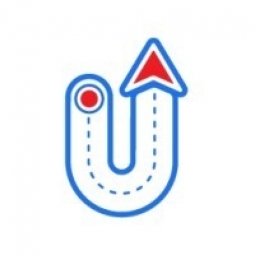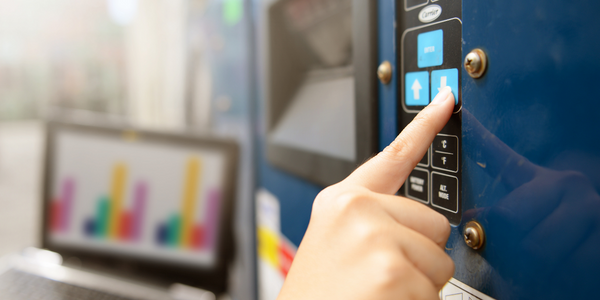Parkwood Products Ltd.'s Transformation: From Manual Planning to Automated & 2x Deliveries With Upper

Technology Category
- Analytics & Modeling - Machine Learning
Applicable Industries
- Electronics
- Transportation
Applicable Functions
- Logistics & Transportation
Use Cases
- Last Mile Delivery
- Vehicle Telematics
Services
- System Integration
About The Customer
Parkwood Products Ltd. is a family-owned business based in Whanganui, New Zealand, specializing in hand-crafted doors. The company delivers its premium doors, shutters, and louvers to a diverse client base, including public and private organizations, as well as individuals across New Zealand. The company is renowned for its high-quality products and has a strong reputation in the manufacturing industry. Despite its success, the company faced challenges in its delivery process, primarily due to its reliance on manual processes and the lack of control over the delivery process.
The Challenge
Parkwood Products Ltd., a renowned door manufacturer in New Zealand, faced several challenges in their delivery process. The company had a diverse client base, including schools, organizations, and individuals, which required efficient and reliable delivery services. Their primary challenges included dependency on drivers for route planning and execution, inefficient processes, and lack of control over the delivery process. The company's traditional approach relied heavily on the drivers' knowledge and experience, which increased the chances of human error in route planning. They were using Bing Maps to estimate delivery times, a process that was repeated for every single delivery. The lack of control over the delivery process was a significant challenge for the supply chain manager, who had limited control as he had to rely on drivers for route planning. These challenges, while not overly complex, were time-consuming and affected the company's overall efficiency.
The Solution
To address these challenges, Parkwood Products Ltd. turned to Upper, an Artificial Intelligence (AI) solution that provided a comprehensive solution to their delivery process challenges. Upper's advanced route optimization feature used advanced algorithms to determine the most effective delivery routes, eliminating the need for manual route planning and streamlining delivery routes for time and fuel efficiency. The company also transitioned from manual paperwork to digital manifests and electronic signatures, which significantly reduced errors and delays caused by manual paperwork. This shift to a paperless delivery system resulted in significant time and resource savings. Upper's 'Proof of delivery' feature enabled users to take photos of the delivered goods with the end customer, confirming successful deliveries and reducing the chances of customer complaints about damaged goods. Upper's adaptability was also crucial during the pandemic, allowing quick adjustments to delivery routes and accommodating new delivery stops as needed.
Operational Impact
Quantitative Benefit

Case Study missing?
Start adding your own!
Register with your work email and create a new case study profile for your business.
Related Case Studies.

Case Study
Remote Temperature Monitoring of Perishable Goods Saves Money
RMONI was facing temperature monitoring challenges in a cold chain business. A cold chain must be established and maintained to ensure goods have been properly refrigerated during every step of the process, making temperature monitoring a critical business function. Manual registration practice can be very costly, labor intensive and prone to mistakes.

Case Study
Airport SCADA Systems Improve Service Levels
Modern airports are one of the busiest environments on Earth and rely on process automation equipment to ensure service operators achieve their KPIs. Increasingly airport SCADA systems are being used to control all aspects of the operation and associated facilities. This is because unplanned system downtime can cost dearly, both in terms of reduced revenues and the associated loss of customer satisfaction due to inevitable travel inconvenience and disruption.

Case Study
IoT-based Fleet Intelligence Innovation
Speed to market is precious for DRVR, a rapidly growing start-up company. With a business model dependent on reliable mobile data, managers were spending their lives trying to negotiate data roaming deals with mobile network operators in different countries. And, even then, service quality was a constant concern.

Case Study
Digitize Railway with Deutsche Bahn
To reduce maintenance costs and delay-causing failures for Deutsche Bahn. They need manual measurements by a position measurement system based on custom-made MEMS sensor clusters, which allow autonomous and continuous monitoring with wireless data transmission and long battery. They were looking for data pre-processing solution in the sensor and machine learning algorithms in the cloud so as to detect critical wear.

Case Study
Cold Chain Transportation and Refrigerated Fleet Management System
1) Create a digital connected transportation solution to retrofit cold chain trailers with real-time tracking and controls. 2) Prevent multi-million dollar losses due to theft or spoilage. 3) Deliver a digital chain-of-custody solution for door to door load monitoring and security. 4) Provide a trusted multi-fleet solution in a single application with granular data and access controls.







